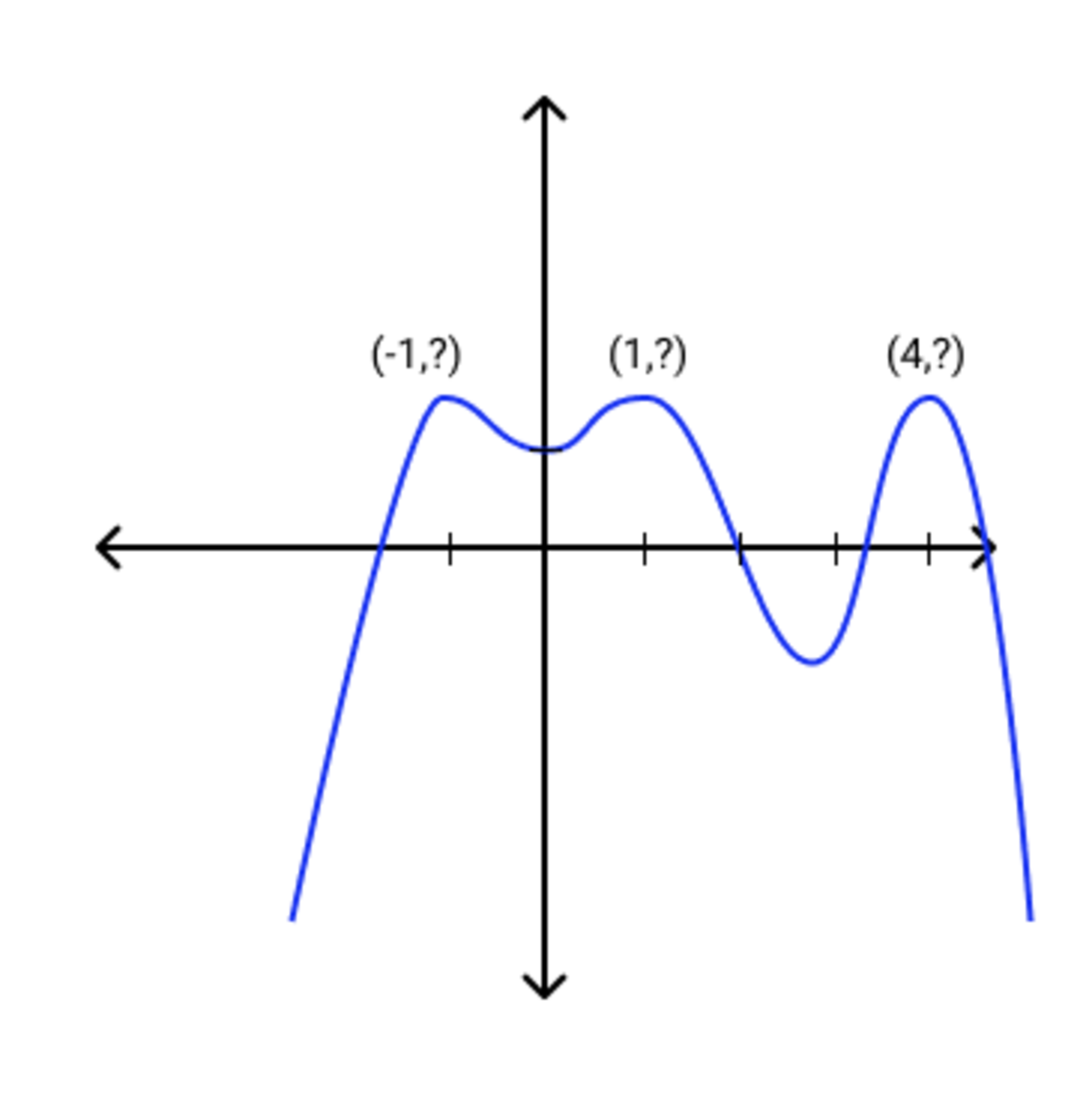Three level maxima

A degree polynomial has -intercept and attains its absolute maximum value when is and . One of its -intercepts is . Determine the polynomial's maximum value.
This section requires Javascript.
You are seeing this because something didn't load right. We suggest you, (a) try
refreshing the page, (b) enabling javascript if it is disabled on your browser and,
finally, (c)
loading the
non-javascript version of this page
. We're sorry about the hassle.
Call the polynomial P ( x ) and its maximum value k . Define a new 6th degree polynomial Q ( x ) = P ( x ) − k . Then Q ( x ) is tangent to the x -axis at − 1 , 1 , and 4 so it has double roots at each of these values and thus has the form Q ( x ) = a ( x + 1 ) 2 ( x − 1 ) 2 ( x − 4 ) 2 for some constant a .
This means P ( x ) = a ( x + 1 ) 2 ( x − 1 ) 2 ( x − 4 ) 2 + k and using the given intercepts ( 0 , 1 ) and ( 2 , 0 ) we get two equations:
P ( 0 ) = 1 = 1 6 a + k P ( 2 ) = 0 = 3 6 a + k
Solving yields a = 2 0 − 1 and k = 5 9 = 1 . 8